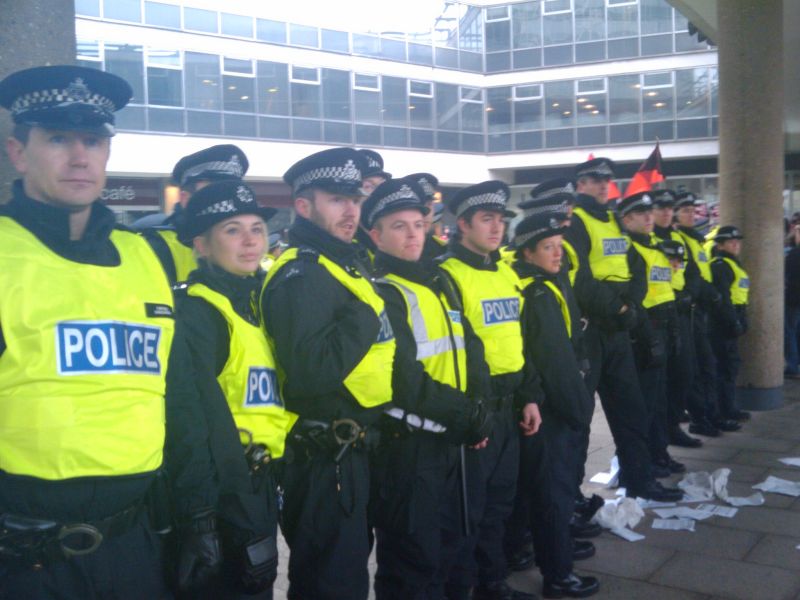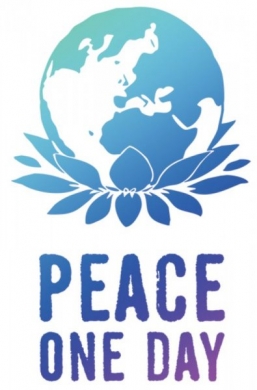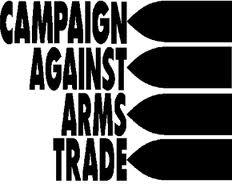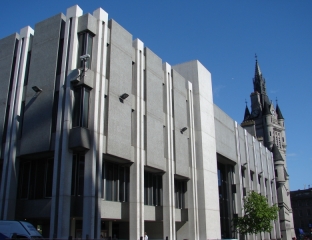“They didn’t value my mum’s life and they certainly didn’t value my sister’s life. Ultimately, they’re dead. I will never, ever heal. Ever.”
– Stacey Banner to the BBC, on murders committed by John Lowe. Police returned guns to him despite his threat to ‘blow off’ Stacey Banner’s head.
The police certainly have problems. Previous articles in this series have looked at the issues of institutionalised racism, guns and how our rights are being chipped away, little by little. With all the powers of surveillance at their disposal, police surely are able to determine when people are in potential danger. How are the 21st century UK police treating women? Suzanne Kelly reports.
 Christine Lee and her daughter Lucy are dead. Like so many murdered women, they knew their killer. It was 82-year-old puppy farmer John Lowe, who was husband and stepfather to them.
Christine Lee and her daughter Lucy are dead. Like so many murdered women, they knew their killer. It was 82-year-old puppy farmer John Lowe, who was husband and stepfather to them.
Surrey Police had confiscated guns from 82-year-old John Lowe when he threatened to kill his stepdaughter and his wife.
The guns were returned some eight weeks later. The women are dead. The police are sorry.
There will be the usual inquiry; the usual wrists have been slapped. The women could still be alive, like so many other women who turn to the police, only to be let down again and again.
Domestic Violence:
Women who come forward to report abuse, or the threat of violence, are still being dismissed by the police. The old, outdated notion of dismissing marital violence as ‘just a domestic’ seems to be alive and well, as the murders committed by John Lowe attest.
The police launched a visible offensive against domestic abusers in February this year. One has to hope that the partners were warned in advance; but if so, surely that would have caused anxiety. If the victims of abuse were not warned in advance of their partner’s arrests, the consequences could be very serious: in domestic abuse the pattern is to blame the wife/partner for everything that goes wrong.
One can only hope the women were and are being given all the help and support they need. Otherwise, this particular exercise seems like a headline grabber with potentially lethal consequences.
Sexual Assault and Rape:
One in five women aged 16-59 has experienced some form of sexual violence since the age of 16 according to Rape Crisis.
This is a statistic which should shock the government and police into action. Victims of rape and other violence are often afraid to come forward, and the way they are sometimes treated when they do leaves much to be desired.
In a famous interview Ken Clark in 2011 spoke with an extremely brave woman who reported an attempted rape, endured examinations, court battles, hours spent with police and legal teams. Her attacker, a repeat offender, spent about a year and a half in custody.
More recently, UKIP member and donor Demetri Marchessini said women cannot be raped by their husbands.
It’s sometimes hard to believe that it’s 2014 when we look at how rape victims are treated. The news last week carried the story of Eleanor de Frietas. This vulnerable woman went to the police with a tale of being drug raped. What happened subsequently led to her suicide.
The police had no grounds for thinking she was lying, but when the alleged rapist took her to court in a private action for £200,000, the Crown Prosecution Service decided to go after her as well. Unable to stand the ordeal, she took her own life.
When the Police are the Perpetrators:
Women are being abused by serving officers. An online resource lists various police officers in the UK and the vast array of charges levelled against them, which include rape, sex with a vulnerable woman, and child abuse.
Then there is the case of Ryan Reid, 27, a special constable who used his position to illegally search police files for information about women he was veritably stalking; he sent naked photos and sexual messages to half a dozen women. According to the Daily Mail:
“Reid, of Lesmahagow, Lanarkshire, who was stationed at Carluke Police Office, pleaded guilty to seven charges involving five women … one of his victims was just 15 when he began contacting her…. He admitted two charges of stalking women, three under the Communications Act and one under the Sexual Offenses Act…he also pleaded guilty to an offence under the Data Protection Act that he did ‘knowingly or recklessly and without the consent of the Chief Constable of the Police Service of Scotland obtain and disclose personal data by repeatedly accessing various police systems with no operational reason for doing so.’”
Reid apparently made a social media comment that when men in the forces drop their trousers they are in trouble, when women do so, it is promotion. Is sexism as rife as racism is within the forces? Is this case the tip of the iceberg, indicating institutionalised misogyny? You could be forgiven for thinking so.
This may well explain the number of women who, despite making numerous pleas to the police, are attacked, sometimes fatally, by persistent stalkers. Three years ago a Guardian article pointed out the dismal failure of the police and courts to protect vulnerable women:
“Two-thirds of victims said the police and Crown Prosecution Service did not take their complaints seriously enough, with offenders not being charged in nearly nine out of ten alleged cases.
“The survey of 140 victims was conducted by the charity Protection Against Stalking (PAS), which found “low level” stalking offences were dealt with too leniently and could escalate into more serious offences, including murder.
“The majority of victims are women. One told how the criminal justice system had failed her:
“The police told me to switch my phone off and ignore him. They said nothing could be done. I showed them dozens of texts and they were not really interested. They said nothing could be done unless he actually tried to hurt me.”
“Another victim said:
“Being abandoned by the police while being stalked only adds to the fear and distress of what is already a terrifying situation.””
http://www.theguardian.com/law/2011/nov/13/stalking-not-taken-seriously
Ryan Reid may have been found guilty of data access and sexual crimes. But what can a Police Scotland officer expect if accused of illegally accessing data on an ex-partner? As reported in the Evening Express, Police Scotland’s DC Duthie has astonishingly been cleared of any wrong doing when his ex’s personal data was accessed by someone within the police.
“DC Duthie, whose address was given in court papers as care of Police Scotland [note – I doubt a member of the public would be allowed to give their work address to the court – SK], had denied accessing the secure information himself.
“He accepted that the files were viewed on February 27 and April 2, 2012 using his unique username and password but said someone else must have used a computer he was logged on to. But today he was found not guilty of the charges.”
Who else would have wanted to look at the data in question? If someone other than Duthie had an interest in this matter, how did they manage to get Duthie’s personal login information? Why hasn’t the person who accessed this information come forward? Have the police identified who it was, and if so, why is no prosecution forthcoming?
This may seem like a case of one man snooping into his ex-partner’s affairs without due cause. What the court decision has done however has set an extremely dangerous precedent: police officers can now access any data they want, and claim that the unique password and login must have been used by an unknown police operative, who will not be sought.
This tiny decision gives the police legal sanction to do whatever they want with our data. It may have passed unnoticed by the mainstream news, but this is a potentially dangerous legal precedent.
WPCs:
It should be noted that women don’t always fare well inside the police forces, either. Unequal pay, discrimination and sexual harassment are all realities. The Scotsman reported in April this year that women in the force are not getting equal promotion opportunities.
Being a domestic abuser is not a barrier to re-joining the force, either.
However, there are a growing number of women in the force. Perhaps positive, real change is within reach.
But as a Guardian investigation found, there is sexism and bias against women making claims of sexual assault against police officers.
Summing up:
Women are being ignored at best, and attacked at worst, by the people paid to protect them. Rape victims are victimised, domestic violence is often downplayed, and stalking victims are routinely brushed off. The recent cases mentioned are only the tip of the iceberg, and the kinds of problems women face also include trafficking and forced marriage, among other issues.
No doubt there will be some kind of investigations into the senseless deaths of Christine and Lucy Lee, and the farcical CPS attack on Eleanor de Frietas which led to her suicide, as her note indicated.
But the system has gone down these routes before without reforming, and reform is possibly farther away than ever before. Change is long overdue, but with comments like those coming from UKIP donor Marchessini, that a husband can’t be guilty of raping his wife, coupled with the scale of abuse either ignored by or perpetrated by the UK’s police forces, it’s hard to see things improving any time soon.
If the situation for grown women is brutal, then it is a far worse reality for children dependent on the state for protection. The next piece in this series will look at issues such as Rotherham, child abuse and how the state and in particular the police, are involved in the neglect and sometimes abuse of children.
Support Services:
Samaritans Aberdeen
60 Dee Street Aberdeen AB11 6DS
Tel: 01224 574488
Email: jo@samaritans.org
Usual hours open to receive callers at the door: 9am – 10pm
Rape and Abuse Support
88 John Street Aberdeen, AB25 1LE
Office Tel: 01224 639 347
Helpline: 01224 620 772
Email: info@rasane.org.uk
Web: www.rasane.org.uk
- Comments enabled – see comments box below. Note, all comments will be moderated.
[Aberdeen Voice accepts and welcomes contributions from all sides/angles pertaining to any issue. Views and opinions expressed in any article are entirely those of the writer/contributor, and inclusion in our publication does not constitute support or endorsement of these by Aberdeen Voice as an organisation or any of its team members.]







